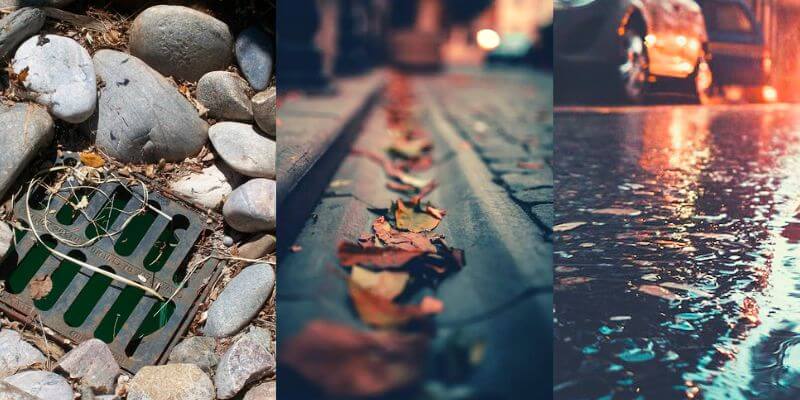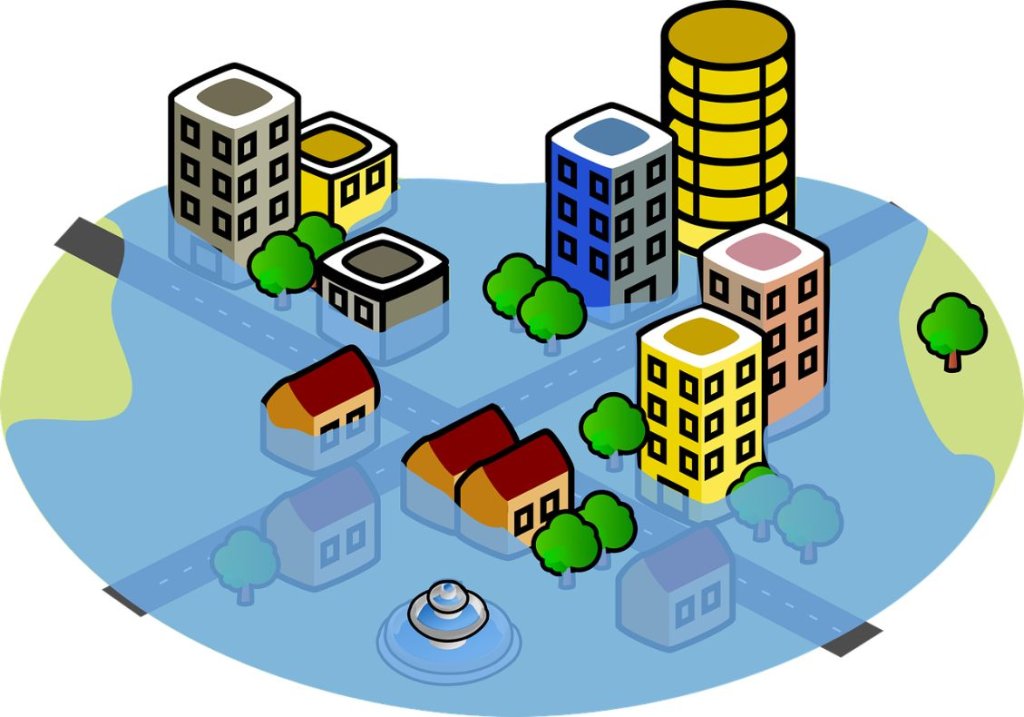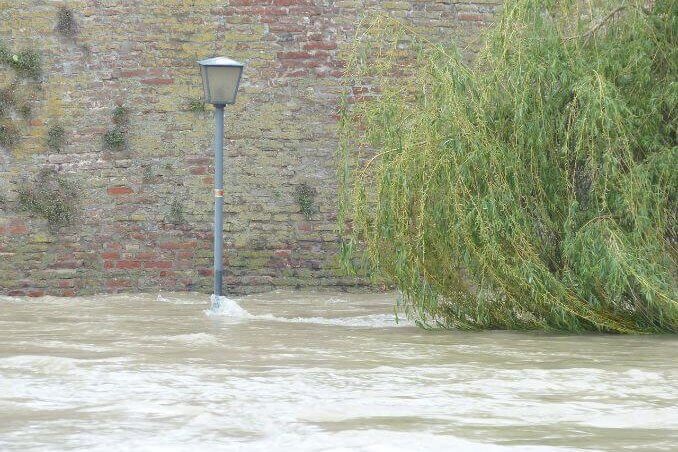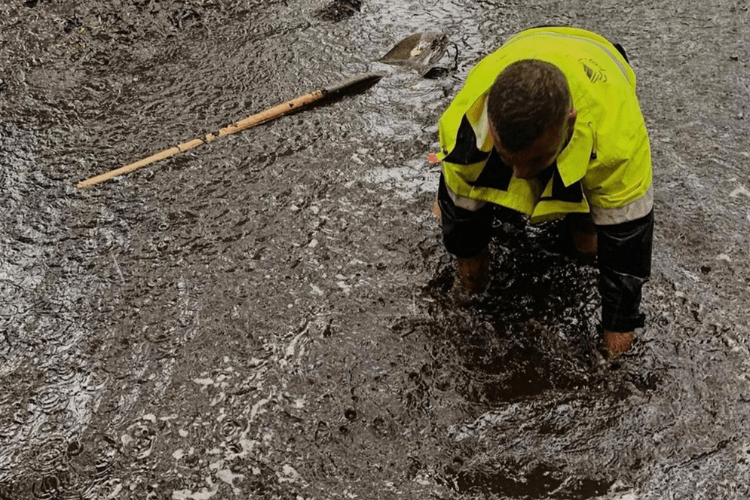Your stormwater drainage system, made up of gutters, downpipes, stormwater drainage pits and the stormwater network in your street, is designed to manage and remove excess water. While Australia is famous for its sunny days and outdoor lifestyle, anyone who lives here will tell you that during the wet season, the rainfall can be relentless.
A reliable pipe drainage system is key to avoiding damage to your property through overflowing water and flooding. However, a stormwater drain blockage can happen to anyone.
So, why do blocked stormwater drains happen? What steps should you take to unclog blocked stormwater pipes? And what are the signs to look out for? In this blog post, you’ll discover the answers to all of these questions and more. Read on to find out.
Throughout this guide, we’ll cover all aspects of troubleshooting and diagnosing a blocked stormwater drain. If you would like to skip the backstory and get right to the step by step instructions, head down to the next section.
How to clear blocked stormwater drains
The following is a method that can help with minor blockages. Remember, if you’re unsure about doing the job yourself, call a plumber to do the task for you.
Any major underground pipe repair is best left to pipe rehabilitation specialists who know various methods and ways to perform the job safely, efficiently and effectively.
Steps to unblock a stormwater drain
Preparation
Expected time to unclog a drain: 2-4 hours, depending on the pipe blockage and your ability to clear it.
Equipment needed:
- Protective gear like goggles. Also, wear clothing you don’t mind getting messy.
- A drain auger
- Rubbish bags
- Rubber gloves and face mask
- Screwdriver, rope or something to lift the drain cover.
- Pressure hose (for cleaning the drain afterwards)
Procedure
- Remove the drain cover: Use your screwdriver to remove the drain cover. It may be heavy, so you might need a rope or a second person for assistance. Be careful not to drop the cover down the drain.
- Find the blockage: Try to find the blockage and remove as much as you can with your gloved hands. If you can’t find the blockage, it’s time to call in pipe repair specialists for a drain camera inspection.
- Use your drain auger: Once you’ve removed as much debris as possible, use your drain auger to take care of the rest. This will require a lot of twisting, and depending on the severity of the blockage, it’ll be tough going at first. When it becomes easier, it’s a sign you’re making progress.
- Use a pressure hose: Once you’ve loosened the blockage, use your pressure hose to blast away any remaining debris.
Bonus step: Prevention is the best cure
Prevention is one of the best measures you can take to avoid a drain blockage. Regular plumbing maintenance to prevent the accumulation of debris will go a long way to avoid these types of plumbing problems in the future.
While there will be severe storms that can block even the most well-maintained drain, keeping your roof gutters, kerb, and the general area clear of debris will go a long way to preventing foreign objects from blocking stormwater pipes and drains.
What causes blocked stormwater drains?

The most common cause for a blocked stormwater drain is a build-up of debris inside the pipe.
This debris includes leaves, tree roots, sticks, garden waste, dirt or rubbish. All of which can easily end up in your pipes during a heavy summer storm or flooding in Sydney.
Overflowing drains not only causes property damage and a mess for you to clean up, but they’re also a safety hazard. Barring minor blockages, you’ll need to call pipe relining experts for a diagnosis. Often times, they will use a high pressure water jet blaster to unclog, clean, and clear blocked stormwater pipes and drains.
With that in mind, let’s look closely at what symptoms would indicate you have a blockage in your stormwater drain.
4 signs of a blocked stormwater drain or pipe
The quickest way you’ll discover if your stormwater drain has a problem is during heavy rain, when your system is put to the test. However, the good news about a blocked stormwater drain is: it’s not symptomless.
Tell-tale signs of a blocked stormwater pipe
- Backyard or property flooding: A stormwater system is designed to handle a lot of water; however, blockages will diminish this capacity. And that water has to go somewhere! Unfortunately for you, it’s likely to flood your property. If you live in Sydney, pipe relining experts or a plumbing inspector will need to be called.
- Water overflow: If you notice any overflowing ever in your yard or the street, your drains aren’t working as they should be, and odds are, it is because of a blockage. Damp patches could also indicate leaks in your pipes, which is also something you need to have a look at.
- Gurgling noises during your showers, sinks or toilets drain: The gurgling noise comes from water slowly moving through the pipes, which causes air bubbles to form and rise. It’s worth having a plumber look at this if it is a recurring problem.
- Any issues with water flow: If you notice any issues or irregularities in the plumbing in your house, it could be a sign of foreign materials clogging your storm drains.
Who is responsible for cleaning blocked stormwater drains in Sydney?

So, you’ve noticed problems with your stormwater drains, and all the signs point to a blockage. The next question is, who’s responsibility is it to fix it? This will vary on a few factors, including:
- The location of the pipes
- Who’s responsible for the damage? (especially relevant in a rental situation)
- Who owns the stormwater drain? Specifically, is it public or private property?
For a detailed look at the various situations and factors to consider regarding stormwater drains, click here to find out how to determine who is responsible for a blocked stormwater or sewer drain in Sydney.
Long-term consequences of a blocked stormwater drain

If you notice any signs indicating a blockage in your pipes, it’s best to have it looked at sooner rather than later. Overflowing water can eventually flood your home and cause severe damage to your property, including your yard, garden, or house.
If water seeps into your house, it can cause damage to your flooring, creating a perfect environment for mould. It can even damage the structure of your home through rot and warping.
There are also mild health issues associated with clogged drains and pooling water. Along with the mould mentioned above, damp conditions can attract mosquitos and bugs. From an immediate safety perspective, there is the risk of slipping, either from algae on cement or mud, causing a nasty injury.
The longer these issues are left unattended, the more difficult they’ll become to solve. The price to repair structural damage is incredibly expensive, especially compared to the cost of unblocking your drain. If you do have to pay for a comprehensive pipe fix, it’s best to reline your pipes vs digging trenches to replace the pipe itself.
Never heard of pipe relining before?
Learn more about Pipe Relining
– or –
Why the cost of relining is 30% cheaper than pipe replacement
If unclogging your stormwater drain sounds like a hassle, the great news is you don’t have to do it yourself! The Relining Company specialises in clearing blocked drains.
We use a high-pressure water jet blaster that can cut through everything from tree roots to debris, leaving your pipes clear and running their best. It’s quick, easy and stress-free.
If you need help with your stormwater drains, want to inquire about pricing or have further questions about pipe relining, get in touch with our friendly team today!
Back to Top